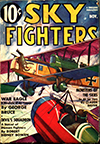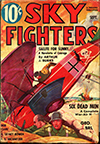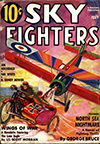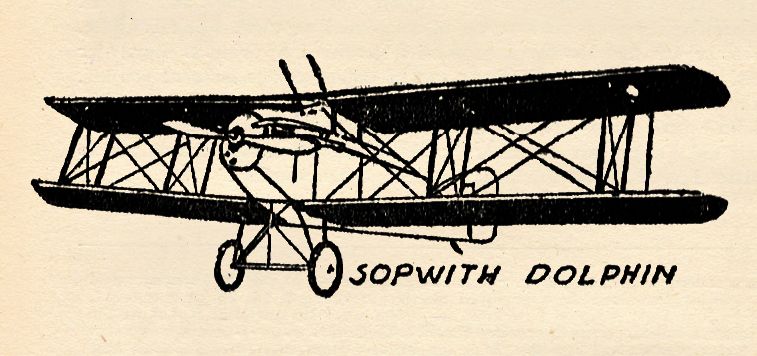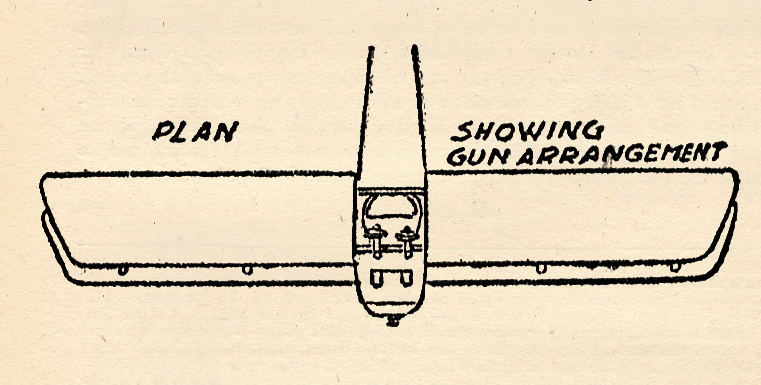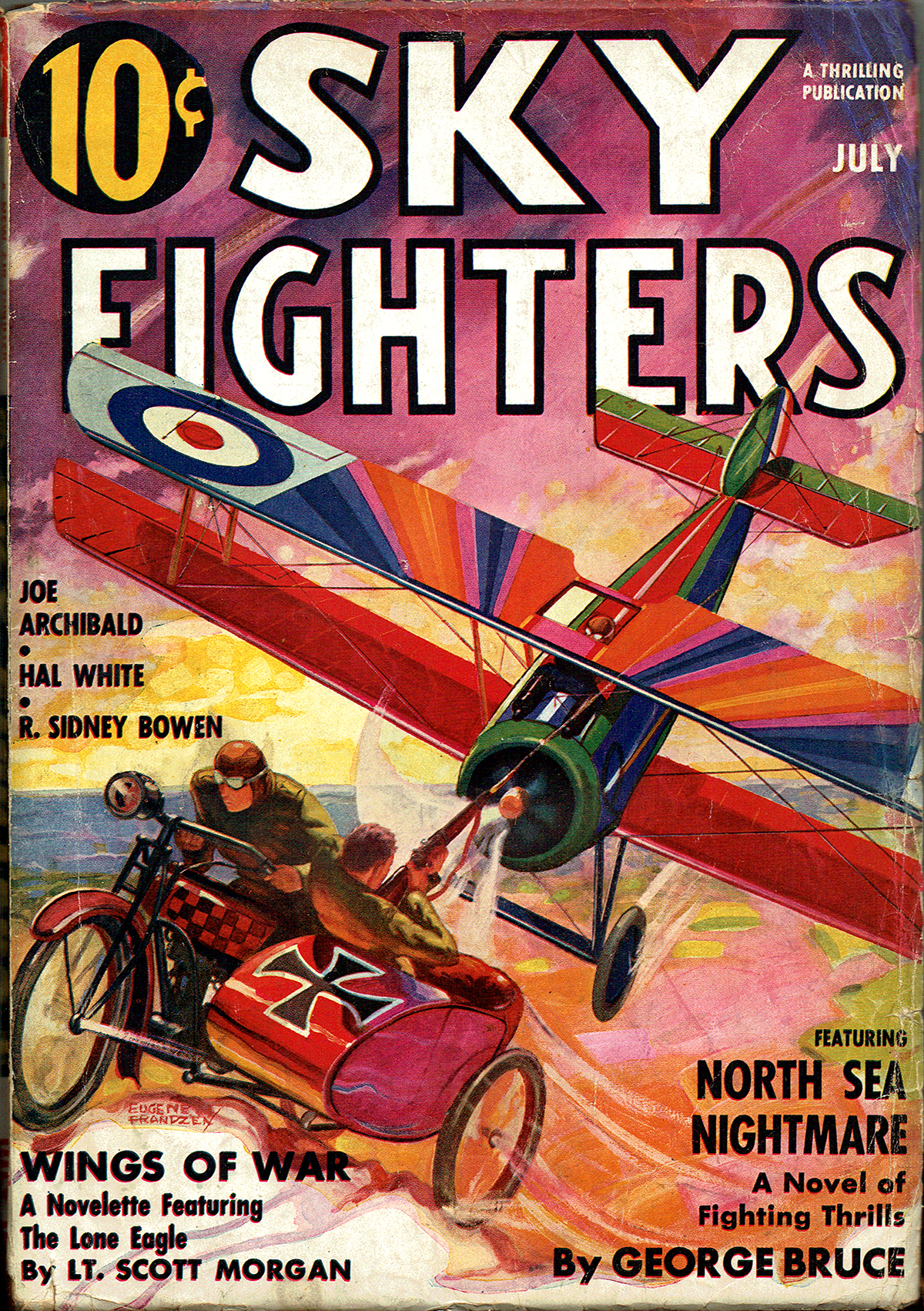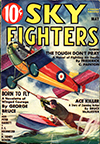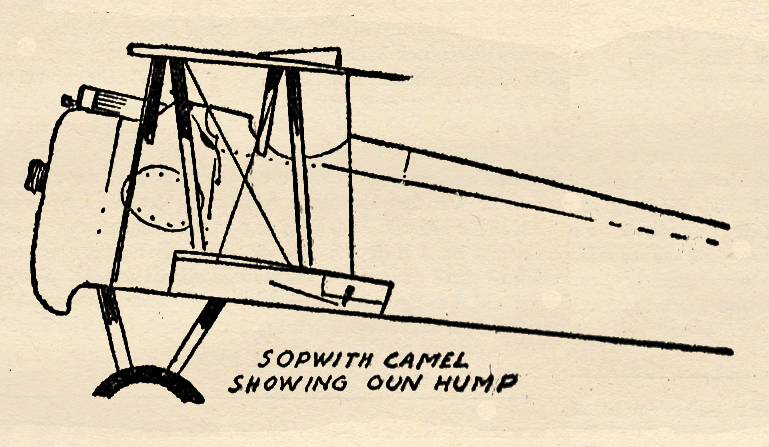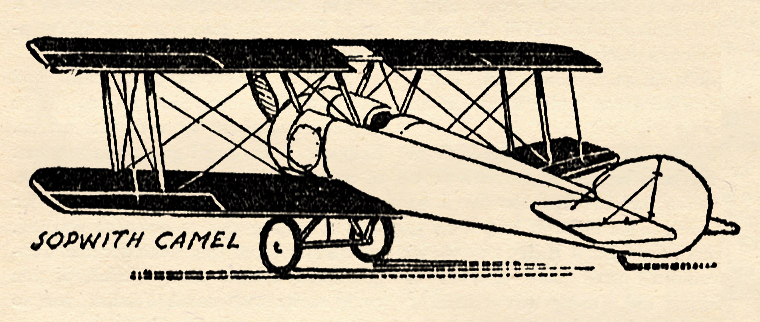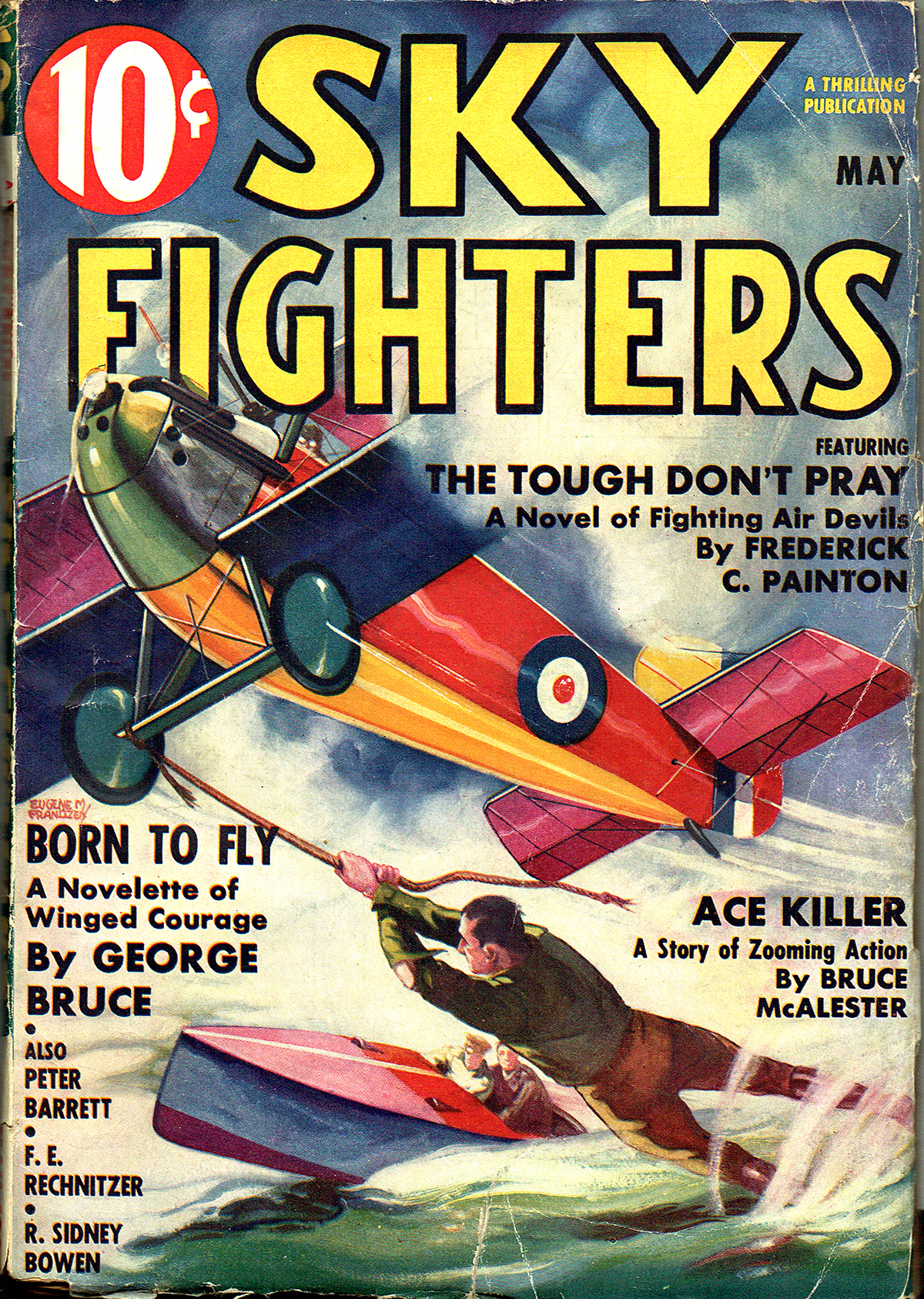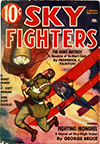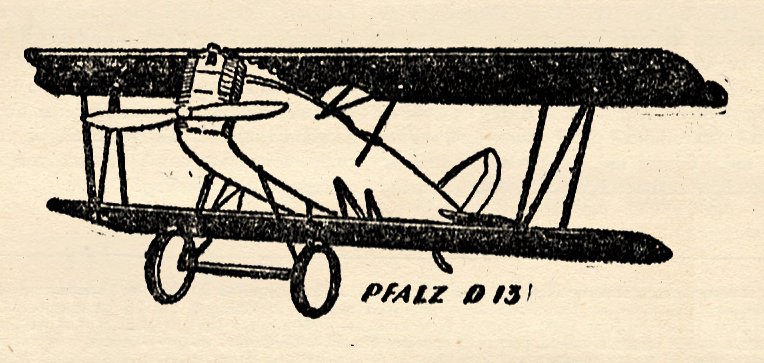Eugene M. Frandzen painted the covers of Sky Fighters from its first issue in 1932 until he moved on from the pulps in 1939. At this point in the run, the covers were about the planes featured on the cover more than the story depicted. On the March 1937 cover, It’s the S.I.A. Type 9B!
The Ships on the Cover
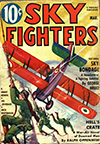 ANY Italian or Austrian soldier who served during the World War on the Italian front could, without any trouble at all, pass the scaling ladder tests of any fire department in the world. Those combatants climbed perpendicular, glacial surfaces which, at first glance, seemed insurmountable. Metal hooks, somewhat resembling half of an iceman’s tongs, were heaved up against the icy sides of snowladen cliffs or ice formations.
ANY Italian or Austrian soldier who served during the World War on the Italian front could, without any trouble at all, pass the scaling ladder tests of any fire department in the world. Those combatants climbed perpendicular, glacial surfaces which, at first glance, seemed insurmountable. Metal hooks, somewhat resembling half of an iceman’s tongs, were heaved up against the icy sides of snowladen cliffs or ice formations.
When the hook held, the climbers inched their way up knotted ropes or ropes with loops for footholds. Sometimes they left an anchored rope hanging for others to follow, sometimes they pulled up the rope and pitched the hook farther up.
“Get there,†was the command. It was up to the soldier to climb till he reached his objective. There, exhausted, with aching muscles shrieking for relief, he probably was met by the foe with a fixed bayonet, or the defenders might cut his rope far above, sending him tumbling grotesquely into space.

An All Purpose Job
The S.I.A. (Societa Italiana Aviazione) Type 9B two seater fighter was one of those ships that was called an all purpose job. It hung up records in climbing, speed, lifting power and endurance. Its engine was the 700 h.p. Fiat (Fabbrica Italiana Automobili Torino).
This ship was used extensively by the Italians. Their aviators liked its reliable engine and its sure fire reaction to the stick. It became the eyes of the Italian army. Spotting for the artillery attacking enemy positions and even rescuing Italian troops from surprise Austrian attacks.
A mountain has two major sides. That side facing the enemy which is watched continually for any advances. The other side behind the defenders, that side up which they have come, down which they may possibly have to retreat. It is so safe from enemy attack that its defense is completely neglected, for what enemy can come in from the rear without being annihilated?
But in the picture on the cover just this situation has occurred. An Austrian commander with vision and initiative penetrated the rear lines at night, sentries were captured without firing a shot. The way was clear. The Austrians commenced climbing before dawn. As the sun threw its yellow glaze over the cold sky the icy cliffs were alive with silent climbing figures in pot helmets. Nearer and nearer they approached their goal where the small group of Italian Alpinis manned mountain guns facing the enemy.
In ten minutes the Austrian climbers could annihilate that group of defenders, pull the guns back, swing them around and blast the Italians below from their positions, allowing the Austrian hordes to sweep through passes and on to a major victory.
A Speck in the Sky
Far in the distance a speck stood out in dark silhouette against the brightening sky. It gained size, its wings glinted as it banked and swooped down toward the cliff. The rear gunner stood in his pit tense with huge binoculars pressed to his unbelieving eyes. He looked a second time and then yelled to his pilot. The throttle was jammed full ahead, the motor roared an ominous shriek as the husky S.I.A. dove and leveled off.
The front guns spattered two long bursts into the Austrians. Ropes were severed, bodies jerked and twisted as men screamed and clawed for a footing. Like a landslide the figures above toppled, they caught others below in their death plunge. Only a few remaining pot-helmeted figures rocked in terror on the slippery ice surfaces of the ragged mountain side. The rear gun of the S.I.A. took up the attack as the front guns ceased to find a target. More Austrians fell from their icy footholds.
Above, the Italian mountain troops looked down, amazed and jittery from the realization of their close call. Far in the distance the receding S.I.A. dipped its wings in friendly salute to the massed group of Alpini troops on the lofty mountain peak who screamed their cheering thanks across the bleak crags of the perpendicular battlefields.
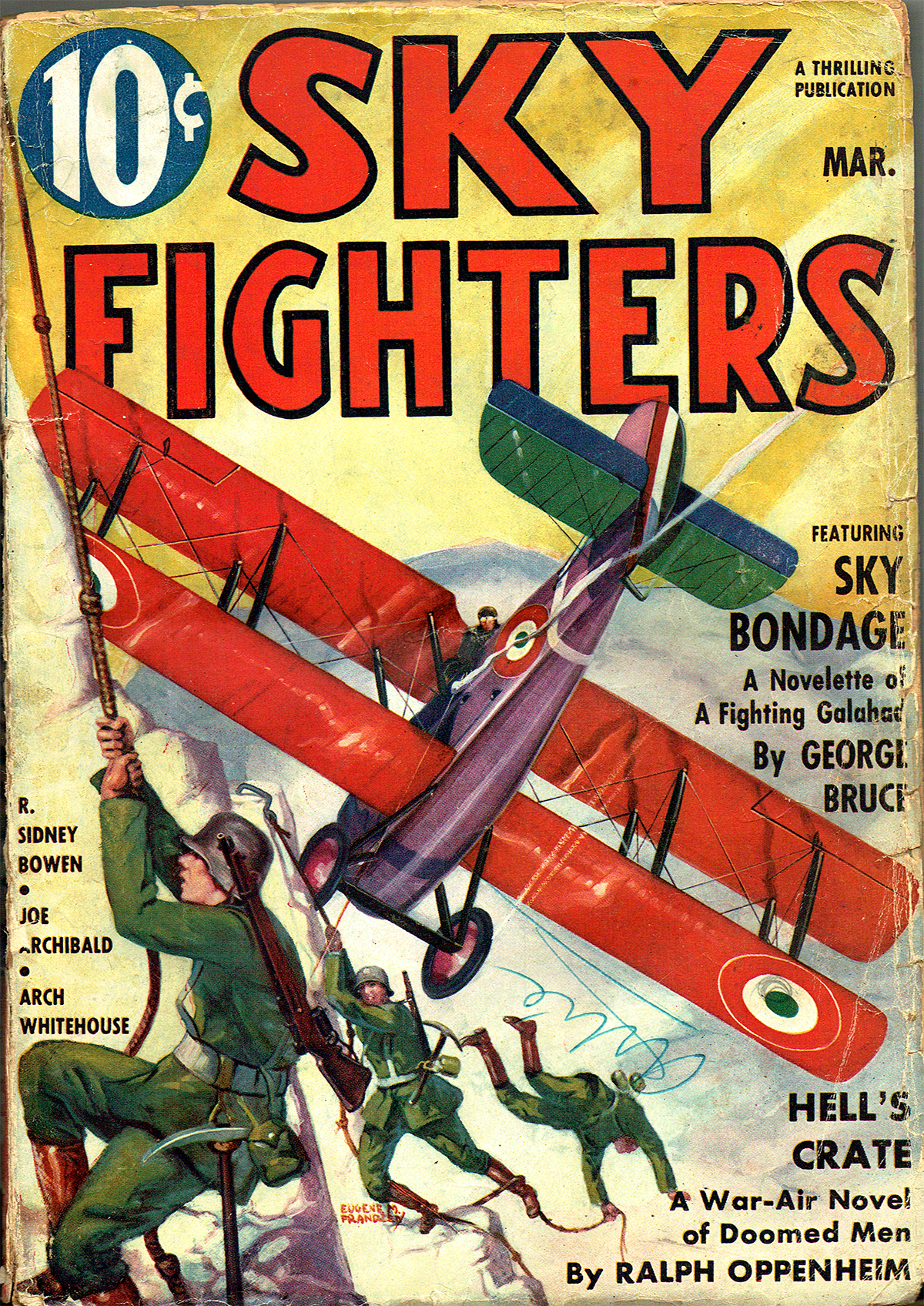
Sky Fighters, March 1937 by Eugene M. Frandzen
(The Ships on The Cover Page)
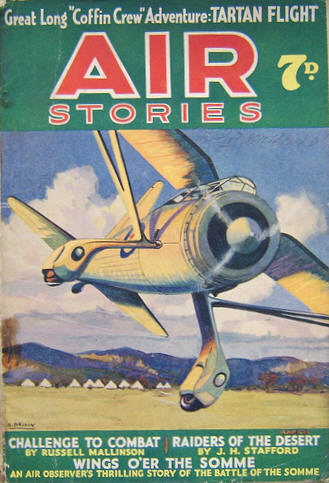 the Christmas Season with The Coffin Crew! Yes, Arch Whitehouse’s hell-raising Handley Page bomber crew! Piloting the bus is the mad Englishman, Lieutenant Graham Townsend, with the equally mad Canadian Lieutenant Phil Armitage serving as reserve pilot and bombing officer with Private Andy McGregor, still wearing his Black Watch kilts, rounding out the front end crew in the forward gun turret. And don’t forget the silent fighting Irishman Sergeant Michael Ryan, usually dragging on his short clay pipe while working over the toggle board dropping the bombs with Alfred Tate and crazy Australian Andy Marks or Horsey Horlick manning the rear gun turret.
the Christmas Season with The Coffin Crew! Yes, Arch Whitehouse’s hell-raising Handley Page bomber crew! Piloting the bus is the mad Englishman, Lieutenant Graham Townsend, with the equally mad Canadian Lieutenant Phil Armitage serving as reserve pilot and bombing officer with Private Andy McGregor, still wearing his Black Watch kilts, rounding out the front end crew in the forward gun turret. And don’t forget the silent fighting Irishman Sergeant Michael Ryan, usually dragging on his short clay pipe while working over the toggle board dropping the bombs with Alfred Tate and crazy Australian Andy Marks or Horsey Horlick manning the rear gun turret.




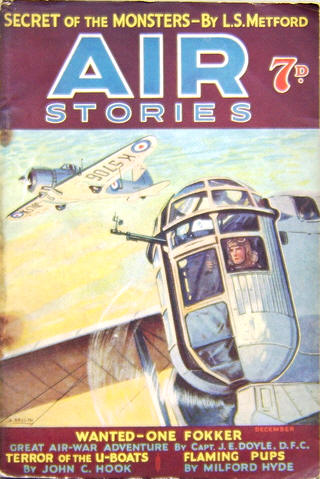 a story from the pen of British Ace,
a story from the pen of British Ace, 
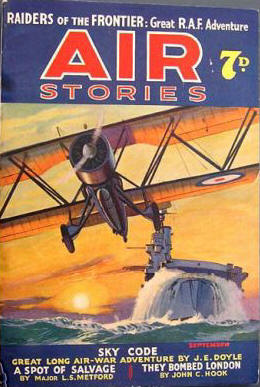 a story from the pen of British Ace,
a story from the pen of British Ace, 

